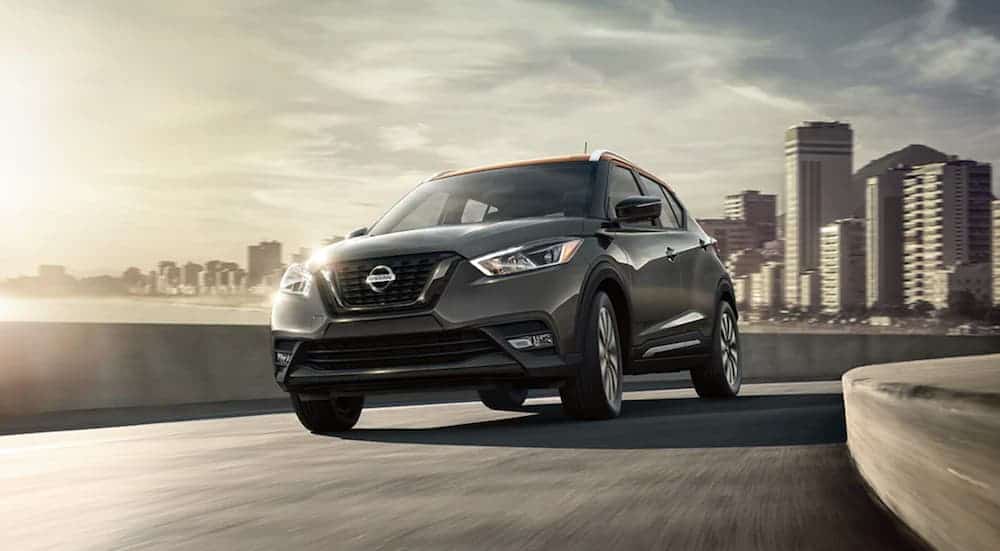The subcompact SUV class continues to grow in popularity, largely because the lower MSRPs facilitate consumer access to more reasonably priced SUVs. The subcompacts are helping to introduce first-time SUV buyers to a class of vehicle they previously thought out of their price range. But there are advantages to purchasing a subcompact as well, such as the (usual) increased fuel efficiency over their larger SUV cousins. So not only is the MSRP lower, but the cost of fuel during the life of the vehicle will be lower too. In addition, the position of the driver is still at the higher seating of an SUV, which is an important selling point for a lot of consumers. A smaller SUV is also more amenable to urban and suburban settings as well. Negotiating tight turns and congested traffic, as well as parallel parking in small spaces, are all easier tasks in subcompact models. In order to more easily discuss the virtues of a subcompact SUV, a side by side comparison of two fun and popular models, the 2020 Chevy Trax vs 2020 Nissan Kicks, will be used to guide us through the article.
The present-day subcompact is a bit different from the first iterations of the smaller class of SUVs that manufacturers introduced in the 1990s and early 2000s. In fact, when trying to discover what the first compact SUV actually was, many google searches resulted in the Jeep Cherokee XJ, which was about the same size as the current Jeep Cherokee (but a lot boxier). Here’s a fun fact: Chevy made the first SUV in 1935, a vehicle called the Suburban Carryall. More accurately, it was more about the concept of an SUV since the Suburban Carryall looks absolutely nothing like a modern-day SUV. But the idea was there––a vehicle was needed to carry workers (the Carryall could fit eight people) around work sites but also have the utility of a pickup truck. And Chevy was the first to produce one.
One of the first models of similar size and likeness to the current day compact or a subcompact SUV was the Suzuki Vitara in 1988. But for the most part, aside from very few exceptions (like the Honda CR-V first introduced to US markets in 1997), the compact SUV was not viable as a class of vehicles in the US until the 2010s. The subcompact is a bit different and an even more recent introduction. By 2013, compact SUVs were the third highest-selling vehicle segment in the world. Once compacts increased in popularity and the class became more competitive along with it, manufacturers responded with an increased number of models.
Enter the subcompact SUV: automakers shrank the compact in size (just a tad) and dropped the price, creating a new size class as well as a new potential market for entry-level SUV buyers. So now that we’ve covered some of the backstory of the subcompact SUV, let’s look at the features and additional benefits of the Trax and the Kicks. So buckle up and let’s get to it!
The 2020 Nissan Kicks

What makes the Nissan Kicks such a popular choice for subcompact SUVs? Well, we can boil it straight down to fuel-efficiency. For example, if you are a driver in a remote area and can’t rely on public transportation to get you around, the Nissan Kicks is a popular choice that will get you where you need to go.
The Nissan Kicks has an EPA estimated fuel economy of 31 MPG in the city and 36 MPG on the highway (33 combined). This is the perfect commuter vehicle if you are traveling long distances for work.
Pair this with a low MSRP of $18,870 (the Kicks is priced about $2,500 less than the Tracks), and the Kicks is proving to be a worthy representative of its vehicle class. Now in terms of the safety features, which is of critical importance in a vehicle, especially if you plan on transporting kids to school or soccer practices on a daily basis, the Kicks is at the top of the class in this regard. In the 2020 version of the Kicks, Nissan made many of the safety features standard, such as forward collision warning, blind-spot warning, adaptive cruise control, and automatic emergency braking.
The 2020 Nissan Kicks is available in three trims: the S, SV, and the SR. In order to upgrade to the premium SR model, it is not as costly due to the lower price point of the entry-level S. Edmunds adds: “The SV adds a ton of content, yet the SR is only marginally more expensive and comes with even more features. We think the LED headlights and surround-view camera system are worth the price of admission alone, but there are other goodies as well. The SR also opens the door to the Premium package and its upgraded accoutrements.” The premium package includes Bose UltraNearfield speakers, LED highlights, and front and rear cameras (Intelligent Around View Monitor).
The 2020 Chevy Trax
Chevy sold more than 116,000 Trax models in 2019, just outside of the top ten in sales for small SUVs. Like the Kicks, the Trax is available in three trims, the LS, LT, and the Premier. The Trax does not have the fuel efficiency of the Kicks, but it does contain a tank that holds 23% more fuel than the Kicks. It also has a spacious and comfortable dual-cockpit design that was made with visibility in mind and comes with a wide array of infotainment features.
It also handles the pavement well, due in part to its 6-speed automatic transmission with overdrive that is electronically controlled. StabiliTrak Electronic Stability Control is the traction control system that Chevy makes as a standard feature in all of its vehicles. Another of Chevy’s safety programs, the Driver Confidence Package, includes benefits such as forward collision alert, rear park assist, and side blind zone alert is an option you will find on the Trax. Add in Chevy’s Infotainment 3 system with a 7-inch touchscreen display, Apple Carplay and Android Auto capability, and 4G LTE WiFi for up to seven devices, and the Trax wraps up its safety and technology in a nice bow.
Which Model Has the Most Power Under the Hood?
At this point, you might be asking what model is the better buy. Well, it comes down to one major thing: performance. The 2020 Nissan Kicks has an engine that is lackluster and can’t match the performance of the Chevy Trax. Under its hood rests a 1.6L DOHC 4-cylinder engine that only gets up to 122 horsepower and 114 lb-ft of torque. A Toyota Corolla performs better than that (2020 models get up to 126 lb-ft of torque).
What about the Chevy Trax? The 2020 Chevy Trax has a 1.4L Turbo ECOTEC 4-cylinder engine under its hood that gets up to 138 horsepower and a whopping 148 lb-ft of torque. When it comes to performance, we will pick the Chevy Trax any day, especially since you aren’t really sacrificing anything at the pump. The Chevy Trax has an EPA estimated fuel economy of up to 26 MPG in the city and 31 MPG on the highway (28 MPG combined). Not bad at all for a subcompact SUV with a performance-minded engine under the hood.
Picking Your Model
Popularity is not the arbiter of quality, but it often indicates something tangible. And although the Chevy Trax debuted in the US in 2015, and the Nissan Kicks not until the following year, the Trax doubled up on the Kicks in sales in 2019 (116,817 for Trax and 58,193 for Kicks). So with double the number of Trax SUVs driving around the country, you are a lot more likely to see a Trax on the road, and for a good reason.





